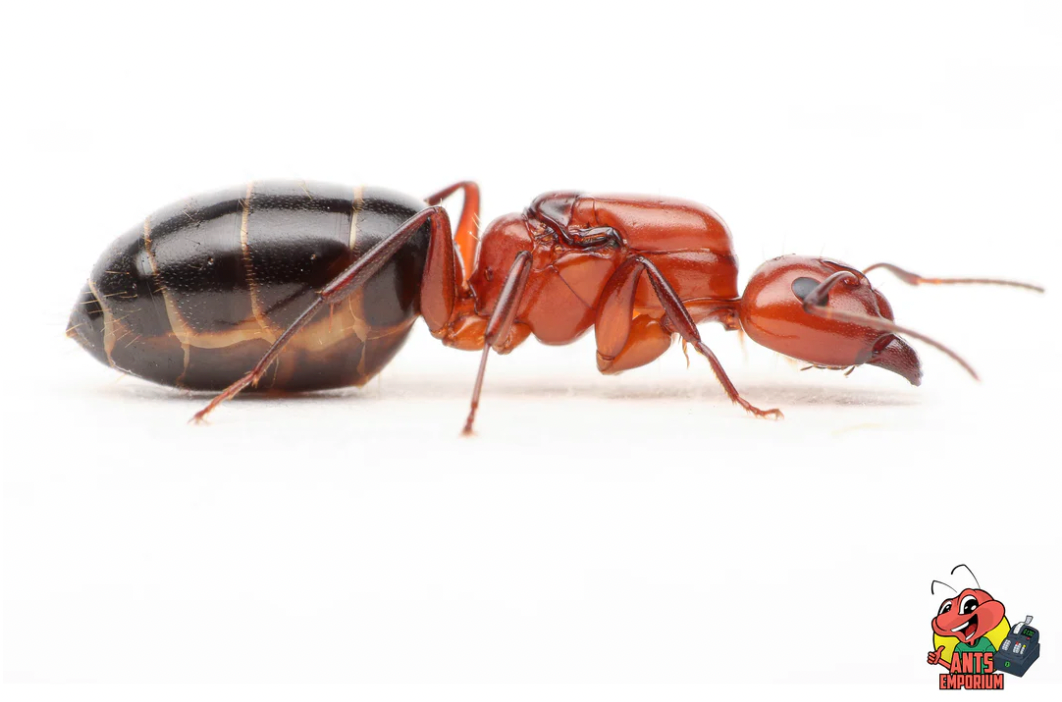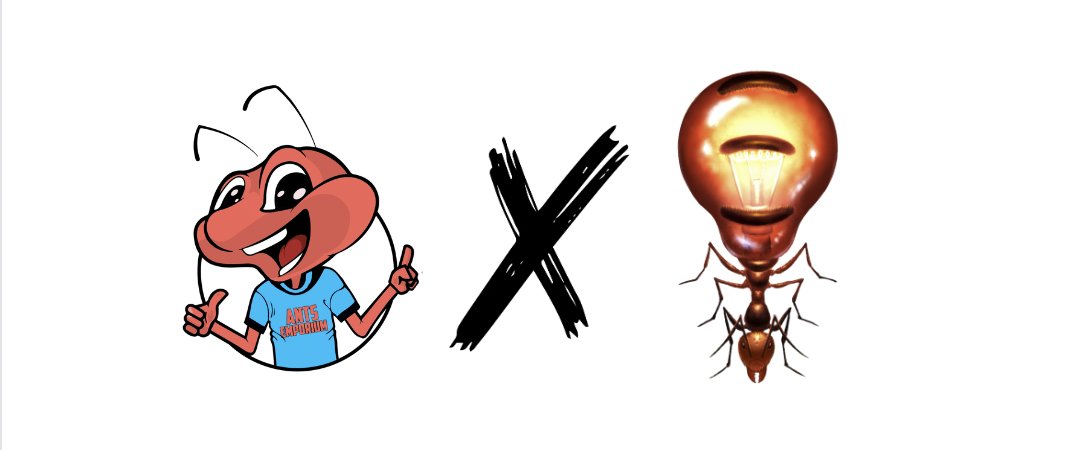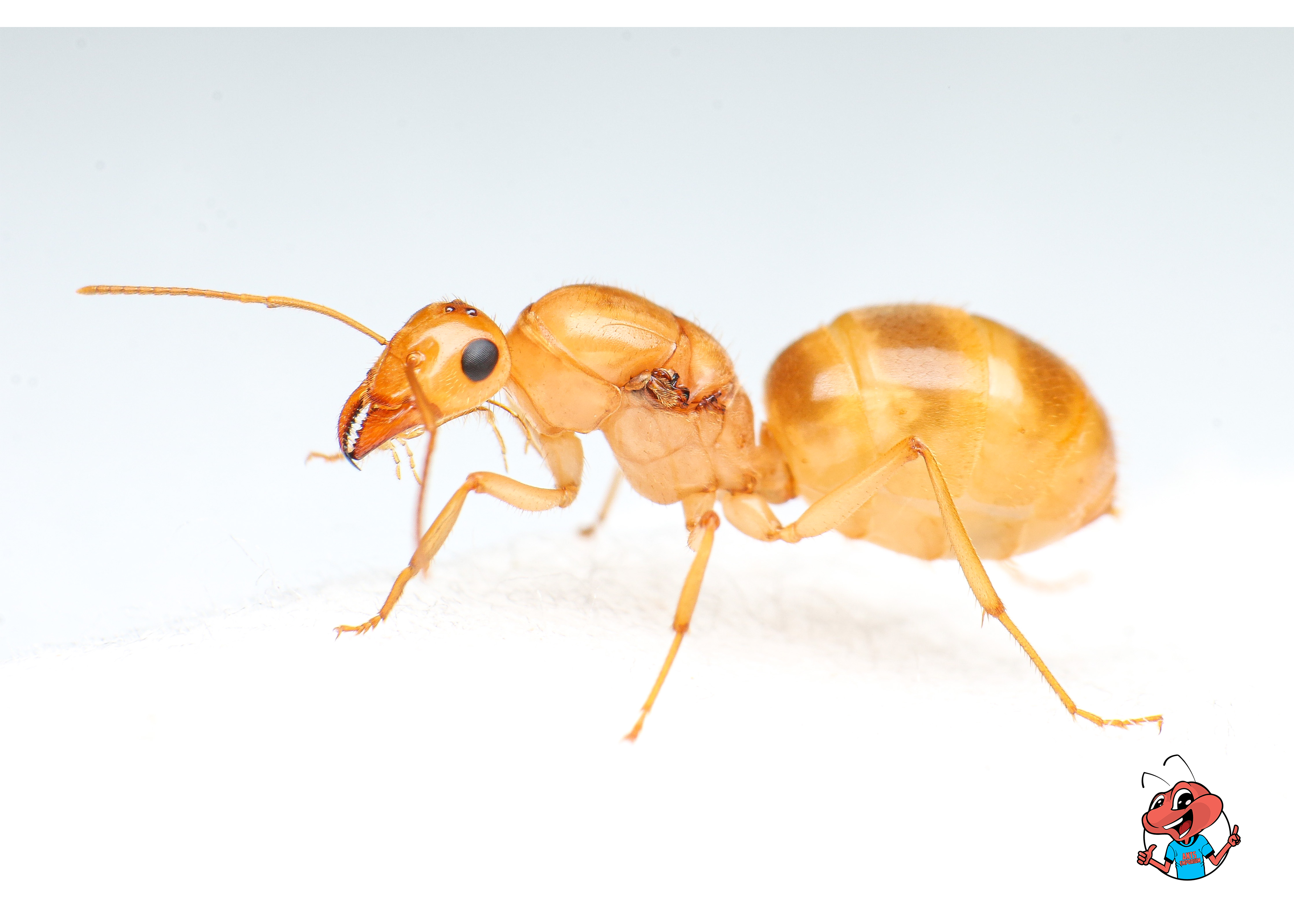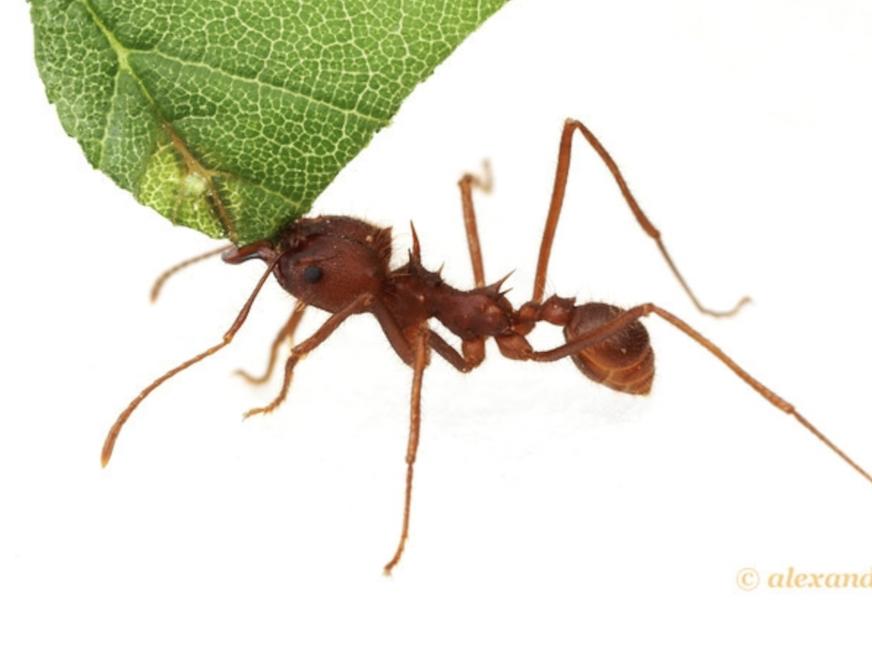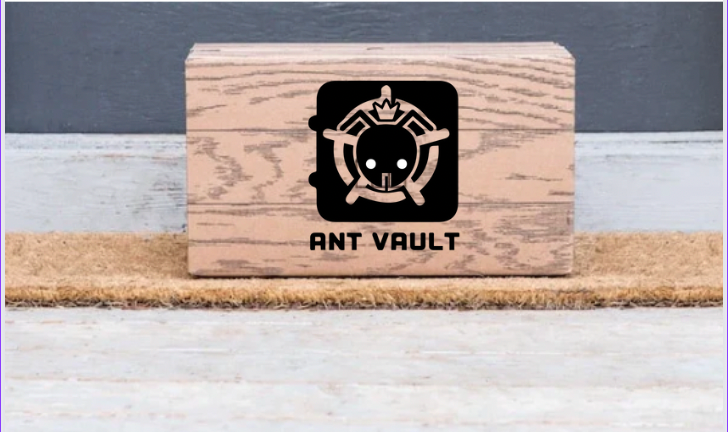Golden Honeypot Ant Care Guide:
Honeypot ants, also known as honey ants, are a group of ants that store food in their bodies to be used during times of scarcity. They are found in arid and semi-arid regions of the world, particularly in Australia, Africa, and the southwestern United States.
Some species of honeypot ants have specialized workers called "repletes" that store food in their distended abdomens, which can swell up to several times their normal size. The repletes remain immobile, and other ants feed on the stored food by tapping the replete's abdomen. The stored food can include nectar, honeydew from insects, and even other insects or small animals. The ability to store food in this way allows honeypot ants to survive in environments where food is scarce or irregularly available.
Here is the care guide to properly take care of Golden Honeypot Ants:
Taking care of honeypot ants requires creating an environment that closely mimics their natural habitat, providing them with a steady source of food and water, and monitoring their health and behavior. Here are the steps to take care of honeypot ants:
-
Habitat: Honeypot ants require a warm, dry environment with plenty of sand or soil substrate. A formicarium with a nest area and feeding station is ideal for housing honeypot ants. The nest area should be kept at a temperature of around 25-30°C (77-86°F), with a humidity level of around 50-60%.
-
Feeding: Honeypot ants require a steady supply of sweet liquids, such as honey, sugar water, or nectar. They may also feed on honeydew produced by aphids or other insects. You can provide a feeding station inside the formicarium that allows the ants to easily access the sweet liquid. It's important to regularly monitor the food supply and replenish it as needed.
-
Water: Honeypot ants require a steady supply of water. You can provide a small container of water or a moist cotton ball in the formicarium. Be careful not to provide too much water, as this can cause the substrate to become overly damp and create an unhealthy environment for the ants.
-
Monitoring: It's important to monitor the health and behavior of your honeypot ants regularly. Look for signs of illness or stress, such as lethargy or a lack of interest in food. You should also regularly clean the formicarium to prevent the buildup of mold or bacteria.
-
Interaction: Honeypot ants are social creatures and require interaction with other ants to thrive. It's important to provide a suitable number of ants in the formicarium to prevent loneliness and depression.
-
Professional care: If you're unsure about how to care for your honeypot ants, or if you notice any concerning signs, it's best to seek professional care from an experienced veterinarian or entomologist who specializes in ant care.
Overall, taking care of honeypot ants requires attention to detail and a commitment to creating a healthy, stimulating environment. With proper care, honeypot ants can thrive in captivity and provide an interesting and rewarding pet experience.
TAXONOMY
Kingdom: Animalia
Phylum: Arthropoda — arthropods
Class: Insecta — insects
Order: Hymenoptera — ants, bees, wasps
Family: Formicidae — ants
Genus: Myrmecocystus (Wesmael, 1838) — honeypot ants, honey ants
Species: Myrmecocystus mexicanus (Wheeler, 1908)
Sources: Wheeler (1908), Snelling (1976)
PHYSICAL CHARACTERISTICS
Length
Workers: 7-9 mm. Female: 12-14 mm. Repletes (the big ants that bloat up) can reach a size of 4 cm, or 1.5 g (sourced from Snelling 1976).
General Appearance
Fully golden colored ant with shiny head and thorax. Golden-plated from the head down to the abdomen. Replete’s abdomen are structured with stiff plates and soft connective tissue that expands when storing liquid. Skin is mildly granulated with tiny hairs that may cover all areas, except connective tissue of repletes. See Snelling (1976) for measurements and detailed scientific description.
NATIVE DISTRIBUTION:
Myrmecocystus mexicanus: Western United States and Mexico (Snelling 1976).
Myrmecocystus spp. distributed throughout northwestern U.S., Baja California, and northern Mexico (Fisher and Cover 2007).
HABITAT:
Arid and semi-arid habitats, including juniper woodlands, sage scrubs, grasslands, sagebrush and saltbush deserts, California and grama steppe, and related habitats. Elevation range: sea level to 7,000 ft (2,000 m) (Snelling 1976; California Academy of Science 2021). Tolerate a wide range of temperatures, up to about 40°C (104°F).
WILD BEHAVIOR AND ECOLOGY:
Activity Patterns
The most well-studied Myrmecocystus species. They are nocturnal foragers that gather a variety of exudates and, although not a major part of their diet, also scavenge dead insects. However in captivity, they are diurnal most of the time.
Wild Nests
Located in open areas between plants. Entrance is a rounded crater (5-7 in, or 13-17 cm, across), composed of small- or medium-sized pebbles and soil surrounded by discarded debris. M. mimicus prefers clay soils and makes low crescent-shaped mounds with an entrance concealed by a clump of dense grass.
We recommend imitating this nest setup with our Upper Chamber Enclosure. We always have success with honeypots with this setup.
Colony Formation
Queens search on the ground while selecting new nest sites. Colonies are often cooperatively founded by more than one fertile queen (pleometrosis), but workers eliminate all but one queen during transition to mature colony. Developing M. mexicanus colonies spaced close together, but in eliminating rivals over time, consolidated to form dispersed mature colonies. Mature colony size may range from approximately 420-1000 individuals (Bartz and Hölldobler 1982).
Aggression and Defense
Within species: M. mexicanus hold flexible, temporary foraging territories to take advantage of patchy food resources. Colonies engage in ritualized “tournaments” — aggressive displays — to defend territorial boundaries without fighting. Confront each other by walking on their leg tips, raising head and abdomen, and drumming antennae around the opponent's abdomen; also kick. When one colony is considerably weaker (smaller worker force), its broods and repletes are raided and often incorporated into the dominant colony’s worker force (sources from Hölldobler 1976; Hölldobler 1981; Bartz and Hölldobler 1982; Lumsden and Hölldobler 1983; Kronauer et al. 2003).
Communication
Appear to use chemical trails to recruit nestmates (foragers) when termite prey detected
Diet and Feeding
Mealworms and specialized honeypot nectar should suffice their dietary needs. There is no special feeding method. Just make sure to feed them every 3-4 days and take out the old food so it does not mold. It is that simple!
Wild Predators
Round-tailed horned lizard, Phrynosoma modestum. Some mammals, such as badgers, dig into chambers to eat honeypots.
Interspecies Interaction
- mexicanus observed pulling scarab beetles into its nests and also ejecting them from nests; association not understood.
Relationship with Humans
Indigenous peoples in southwest North America consider golden honeypot ants a delicacy due to their sweet taste.
ADDITIONAL SPECIES FACTS:
Feature Facts
- Honeypot ants are named for a special caste of large workers (called “repletes”) that store liquid in their expandable abdomen. They regurgitate nectars and water for colony members when food and water are scarce.
- Approximately 30-40 honeypot ant species in North America
- Tolerate temperatures of up to 48°C (120°F)
Myrmecocystus began to diversify about 14 million years ago, as the southwestern U.S. and northern Mexico became more arid, gradually becoming deserts.
